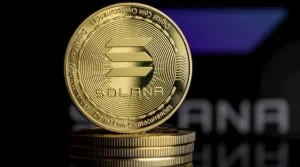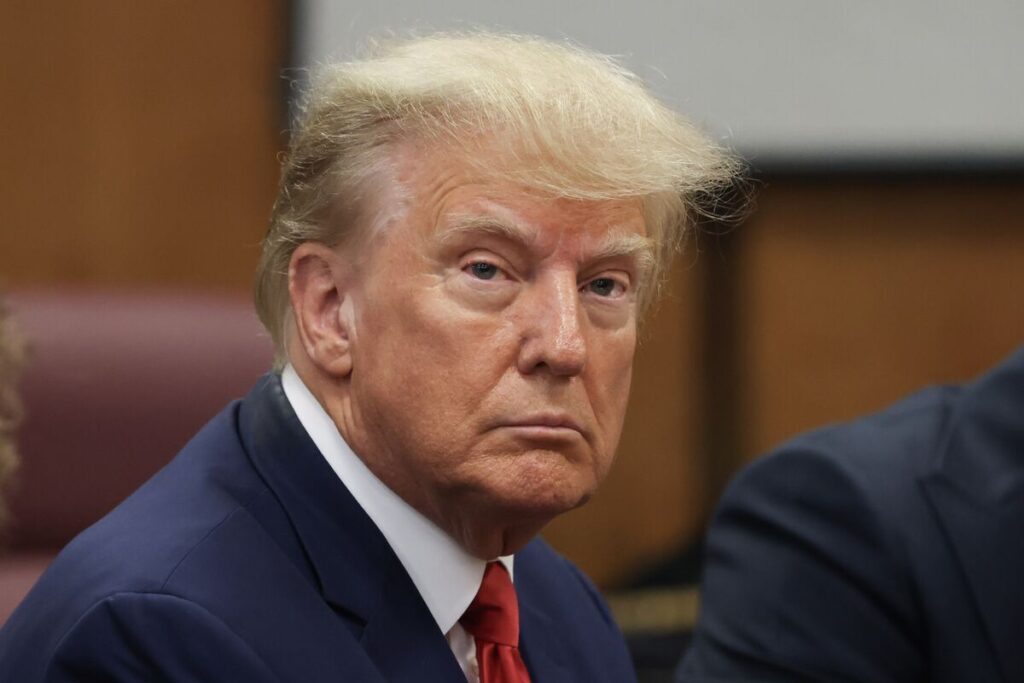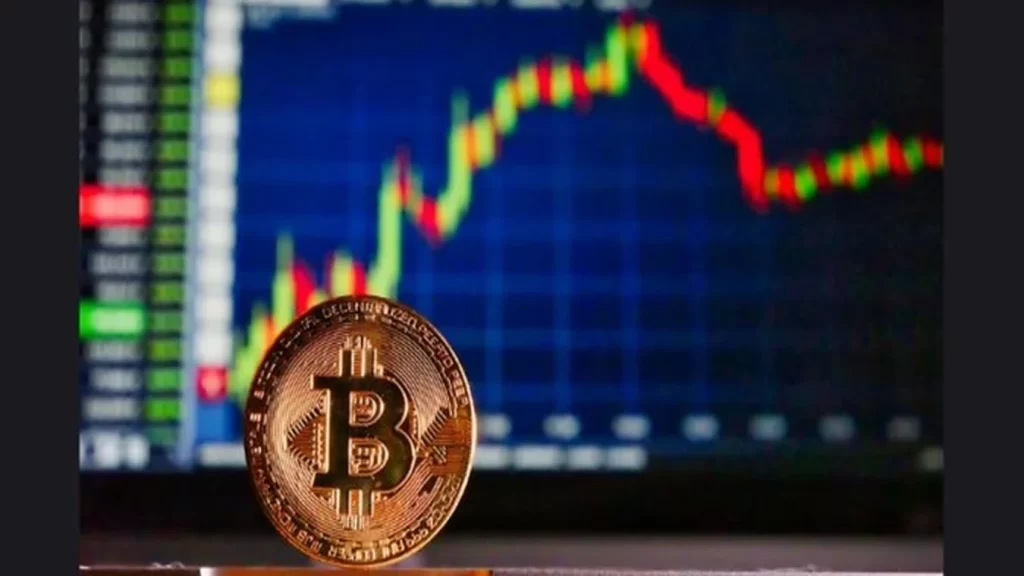Bitcoin climbed to $108,000 on 21 May, edging within 1.5 % of January’s record and stoking talk of a breakout.
A flash dip of around $1,000 shortly after the surge underlined the market’s volatility, yet bulls quickly regrouped as order-book data showed thickening bid walls near $106,000.
Traders now treat $109,356 on Bitstamp as the final psychological barrier before true price-discovery kicks in.
Crypto trader Michaël van de Poppe called the level a “point of interest” and argued that reclaiming it could ignite a run toward $116,000 and beyond.
“It’s always a good morning with Bitcoin at $108,000 and close to a new ATH,” he said on X.
Support zones firm up
Keith Alan of Material Indicators said multiple moving averages and the 2025 yearly open are coalescing into a “formidable support block” between $100,000 and $102,000.
“The 50-Day MA is on a trajectory to golden-cross the 200-Day MA,” he noted, adding, “You can’t really ask for stronger technical support than that.”
Alan conceded a retest of $100,000 would be healthy but now sees that scenario as increasingly unlikely if momentum holds.
Meanwhile, trader Merlijn interprets the recent consolidation as a bullish pennant and points to a technical target of $116,000.
Others, including analyst Henry, set their sights even higher, forecasting a $128,000 “blow-off top” should liquidity remain skewed to the buy side.
Macro tailwinds boost sentiment
The rally coincides with risk-on flows in global markets after US CPI eased for a second straight month and the Federal Reserve signaled patience on further tightening.
Institutional demand also remains robust; spot-Bitcoin ETFs recorded a sixth consecutive week of net inflows, with BlackRock’s IBIT alone pulling in more than $1 billion over the period.
On-chain metrics echo the optimism as dormant supply trends upward and active addresses climb to their highest level since March.
Options data from Deribit shows a growing cluster of open interest at $120,000-strike calls for June expiry, underscoring trader conviction that fresh records are imminent.
Still, skeptics warn that funding rates on perpetual futures are near three-month highs, raising the risk of a flush if spot prices stall below resistance.
Even so, the prevailing narrative is that a clean break above $110,000 would drag short sellers into an aggressive round of liquidations, potentially catapulting BTC toward the oft-cited $128,000 ceiling before any meaningful pullback.
Bitcoin topped $105,000 in U.S. trading, completing what chartists describe as a textbook double-bottom on the one-hour chart.
The formation matches a corridor that preceded March’s surge to record levels.
Range support between $102,500 and $103,500 absorbed sell-side pressure, sweeping liquidity and clearing an overhang of weak longs.
Technical Targets Eye $110,000 This Week
Fractal mapping shows the current band of $106,300 to $100,600 echoing an earlier zone of $97,900 to $92,700.
If the analogy holds, analysts say a decisive break of $107,000 could propel prices above $110,000 within days.
Should momentum accelerate, secondary objectives sit between $120,000 and $130,000.
Accumulation Trend Strengthens Across Cohorts
Glassnode’s Accumulation Trend Score reveals intensified buying by addresses ranging from under 1 BTC to 10,000 BTC.
Only the 1–10 BTC bracket continues to distribute, suggesting broader conviction among retail and institutional players alike.
Historically, synchronised accumulation of this sort has preceded prolonged advances.
Divergence Signals Keep Traders Cautious
Not all indicators flash green.
Chartist Bluntz pointed to a daily bearish divergence that could cap gains if strength wanes.
Analyst Matthew Hyland warned, “BTC is now on the clock and probably needs to make a move to $120k–$130k in the coming weeks to make a higher high on the RSI and avoid any weekly bearish divergence from being confirmed.”
Critical Levels and Risk Scenarios
Failure to hold $103,500 on a closing basis would negate the bullish fractal and open a slide toward $102,000.
Conversely, a clean candle above $107,000 is expected to attract momentum traders and option desks seeking topside exposure.
Broader Context
Macroeconomic conditions remain supportive, with falling U.S. real yields and sustained ETF inflows.
While near-term volatility is inevitable, most on-chain data favour continuation of the primary uptrend.
Bitcoin slid more than 4.5 % from its May 19 intraday top, tumbling to about $102,000 and flashing the first notable bearish divergence in over a month.
The retreat sparked warnings that the market could pierce the psychologically important $100,000 mark if buyers fail to defend near-term support.
Divergence hints at trend reversal
Technical analysts flagged a lower high in the relative strength index versus a higher price high, a classic sign of waning momentum.
Chartist Bluntz cautioned traders to “be careful with [placing] longs” until the signal plays out or is invalidated by a strong rebound.
Swissblock research showed Bitcoin had “grabbed liquidity” above the $104,000–$106,000 band but lacked follow-through, leaving price vulnerable to a deeper pullback.
Key zones come into view
Volume-profile data identifies $97,000–$98,500 as heavy support if the immediate $101,500–$102,500 floor dissolves.
Failure there would open the way to a potential inverse head-and-shoulders retest around $91,000, where the 50-period EMA sits on the three-day chart.
Such a move would echo reversals seen in December 2024 and January 2025, when repeated rejections at the $107,000 neckline preceded sizable drawdowns.
Longer-term outlook intact
Despite near-term weakness, the broader structure still points to a possible surge toward $150,000 once consolidation completes and the neckline flips to support.
Macro drivers, including Moody’s weekend downgrade of U.S. sovereign credit, have added stress to risk assets but could ultimately aid Bitcoin if dollar softness persists.
Derivatives markets show funding rates resetting toward neutral, suggesting leverage has been flushed and setting the stage for a healthier advance when momentum returns.
For now, bulls must prove their resilience by preventing a decisive daily close beneath $100,000, or risk ceding control to short sellers eyeing deeper value zones.
World Liberty Financial, the crypto venture backed by members of the Trump family, is pushing back against calls on Capitol Hill for a formal probe into its operations.
Letter Rejects “False Choice”
Co-founder Zach Witkoff released a May 15 letter to Senator Richard Blumenthal in which company attorneys said lawmakers’ concerns were based on “fundamentally flawed premises and inaccuracies.”
“The Company rejects the false choice between innovation and oversight,” the letter argued. “What it opposes is the misuses of regulatory authority and uncertainty to suppress lawful innovation.”
WLFI maintains that questions surrounding its USD1 stablecoin do not warrant sweeping investigations that could stall development.
Democrats Press Conflict-of-Interest Angle
Blumenthal, ranking member of the Senate Permanent Subcommittee on Investigations, has rallied Democrats to examine potential conflicts stemming from former President Donald Trump’s stake in WLFI, his TRUMP memecoin, and a forthcoming dinner for top tokenholders.
The senator warned that “WLFI’s financial entanglements with the President, his family, and the Trump Administration present unprecedented conflicts of interest and national security risks, including potential violations of the foreign emoluments clause.”
Stablecoin Bill Could Decide the Matter
Attention is now fixed on the GENIUS Act, a Republican-sponsored measure that would grant payment-instrument status to certain stablecoins.
Should USD1 qualify under the legislation, critics fear Trump could benefit financially while also influencing the regulatory environment in which the product operates.
Some Democrats have proposed amendments to ensure no sitting or former president can profit from a stablecoin they could later help legitimize.
WLFI Says It Is “Too Busy Building”
Despite the political storm, Witkoff insists the team is focused on launching products and onboarding users rather than lobbying.
He characterizes oversight efforts as distractions that risk pushing stablecoin innovation offshore.
What Happens Next
The GENIUS Act’s timeline remains unclear, and Senate leadership has not scheduled a vote.
If the bill advances, expect renewed scrutiny of WLFI’s cap table and the extent of Trump family involvement.
Conversely, a prolonged stalemate may give the platform breathing room to scale before facing a fresh round of hearings.
Bitcoin’s illiquid supply has climbed to an unprecedented 14 million BTC, underscoring powerful accumulation trends as the 2025 bull market matures.
The latest Glassnode figures show a 30-day jump of roughly 180,000 BTC, the sharpest increase since late 2022.
Long-term investors are moving coins off exchanges into wallets that historically refrain from spending, reducing the freely tradable float.
How Glassnode Defines “Illiquid”
Illiquid entities are wallets whose cumulative inflows far exceed outflows, signaling a preference to hoard rather than trade.
“This ratio yields a number L between zero and one, with larger values indicating higher liquidity,” the firm explained.
“Liquidity is therefore the extent to which an entity spends the assets it receives. Illiquid entities are those that hoard coins in anticipation of a long-term BTC price appreciation.”
Context of the 2025 Rally
The metric’s new high arrives as BTC hovers near six-figure territory after doubling year-to-date.
Yet supply constraints appear to be tightening faster than price is rising, suggesting demand is outpacing new issuance.
Analysts view the pattern as a powerful tailwind, noting that spot Bitcoin ETF inflows and corporate treasury purchases are absorbing freshly mined coins almost as quickly as they appear.
Whales Keep Buying Above $100K
On-chain data also highlights aggressive accumulation by so-called whale and shark addresses holding 10–10,000 BTC.
“Bitcoin’s key whale & shark tier (holding 10-10K BTC) have now accumulated 83,105 more BTC in the past 30 days,” research firm Santiment reported.
“Meanwhile, the smallest retail holders (holding less than 0.1 BTC) have dumped 387 BTC in the same time period. For both tiers, these are significant movements relative to how much they hold in total.”
Historical Comparison
Previously, the illiquid-supply record of 14.95 million BTC was set in November 2023 as markets clawed back from the post-FTX bear low.
Today’s resurgence suggests experienced market participants remain determined not to sell into strength.
At the same time, speculative short-term holders have thinned out, reducing the likelihood of abrupt supply shocks from panic selling.
Pressure on Exchange Reserves
Rising illiquidity is mirrored by shrinking balances on major trading venues, where combined reserves have fallen to multi-year lows.
The squeeze leaves fewer coins available for margin traders or new buyers, intensifying competition each time momentum accelerates.
Glassnode analysts warn that price discovery can turn “disorderly” when illiquid supply dominates and fresh demand persists.
Institutional Influence Grows
Corporate treasuries and United States spot Bitcoin ETFs continue to mop up circulating stock, adding a structural layer of demand absent in prior cycles.
Observers note that ETF inflows alone have periodically exceeded daily miner issuance, effectively hard-forking the supply schedule through market forces.
With another block-subsidy halving due in 2028, some strategists argue that a long-term supply “cliff” is forming earlier than many models projected.
Outlook for the Remainder of 2025
Bulls contend that so long as the illiquid-supply curve points upward, any pullbacks will be shallow and short-lived.
Bears counter that macro-economic shocks, such as renewed rate hikes, could still jolt dormant holders into distribution mode.
For now, however, the data tilt unmistakably toward continued hoarding—and the market is watching to see how high price must go before these steadfast investors feel compelled to sell.
Bitcoin pierced the $105,700 level on May 12, its highest price in more than three months, yet the rally fizzled within hours and the market slipped toward $102,000. The reversal surprised traders because it coincided with a welcome 90-day pause in U.S.–China tariff hostilities—news that, on paper, ought to boost risk appetite.
Why a Trade Truce Didn’t Translate Into Crypto Gains
Washington and Beijing agreed to roll back some levies and open talks on issues such as “currency manipulation,” “steel price dumping,” and controls on semiconductor exports. Although those concessions gave equities a lift, Bitcoin’s steep 24% advance over the previous month left little room for further outperformance. The digital asset’s 30-day correlation with S&P 500 futures sits near 83%, so a healthy stock rally can sometimes sap the perceived need for an alternative store of value.
Market Cap Milestone Raises Questions
Bitcoin’s latest climb pushed its market capitalisation above that of silver and Google, ranking it the world’s sixth-largest tradable asset. That landmark, however, sharpened debate about concentration risk. Between May 5 and May 11, Strategy acquired another 13,390 BTC, bringing the combined holdings of Strategy and BlackRock to roughly 1.19 million BTC—or about 6% of the circulating supply. Critics such as gold proponent Peter Schiff argue that so much accumulation by one publicly listed company invites trouble if its “ever-increasing average purchase price” forces a future sale to cover borrowing costs.
Macro Winds Favor Equities Over Scarce Assets
While crypto watchers parse blockchain flows, the broader macro picture exerted more influence. The tariff reprieve brightened earnings prospects for multinational manufacturers, favouring stocks over finite assets. Gold, another scarcity play, dropped 3.4% the same day Bitcoin faltered, underscoring how a stronger U.S. dollar can drain demand for hedges.
ETF Inflows Offer a Safety Net
Even so, fundamentals have not turned bearish. U.S. spot-Bitcoin exchange-traded funds absorbed $2 billion of net inflows between May 1 and May 9. Steady institutional buying after a 24% monthly rally implies that the move is no longer driven by retail FOMO but by allocation models adjusting to Bitcoin’s maturing profile. That support makes a slide below the psychologically important $100,000 threshold look unlikely in the near term, barring an unexpected spike in Treasury yields or a disappointing U.S. inflation print on May 13.
Near-Term Outlook
With the détente only temporary, traders will scrutinise whether negotiators can extend the pause beyond its 90-day window. Should talks stall and tariffs snap back, scarce assets like Bitcoin and gold may regain the momentum they surrendered this week. Until then, the path of least resistance seems sideways, oscillating in a broad band whose upper edge—$105,000—has now been tested and rejected.
Bitcoin held onto strong gains as it closed the week of May 11, keeping the crypto market in suspense with prices lingering around the $104,500 mark.
After a surge driven by weekend volatility, traders are eyeing whether the world’s top cryptocurrency is on the brink of a new breakout.
Volatility Fuels Multimonth Highs
Data showed Bitcoin reaching a high near $105,000 over the weekend.
This jump occurred during low liquidity trading hours and coincided with renewed speculation about a positive shift in US-China trade relations.
According to analyst Rekt Capital, the current price level is crucial. “Can Bitcoin do it? Can Bitcoin Weekly Close above the Range High of its recently reclaimed Re-Accumulation Range to kickstart the breakout process?” he asked on X.
He suggested that Bitcoin may be entering the second phase of its “Price Discovery Uptrend,” a period historically characterized by steep gains.
Bull Market May Still Have Room to Run
Rekt Capital’s analysis pegged the current bull market as 85.5% complete but noted that some of the most volatile gains may still be ahead.
Market monitoring site CoinGlass showed a concentration of sell orders just under $106,000, while buy orders stacked below $102,000 indicated strong interest around the current trading band.
This dense liquidity zone suggests both bulls and bears are gearing up for the next significant price move.
Skeptics Warn of a Fakeout
Despite the optimism, some traders remain cautious.
A popular trader known as HTL-NL suggested the current upswing could be a “fake out,” aimed at trapping latecomers betting on more gains.
“Will $BTC close/open the week remaining within the range, will it do a ‘fake out (UTAD)’ or was this really a reaccumulation range as many want to believe,” he said.
He admitted that while a genuine reaccumulation phase is possible, his primary expectation is that the rally may not sustain itself.
Correction Risks Still Linger
Il Capo of Crypto, a well-known bearish voice in the space, echoed similar warnings.
“This is the time to scale out, not in,” he posted on May 10, cautioning that the rebound since early 2024 could eventually be wiped out if Bitcoin fails to break through resistance convincingly.
With strong resistance being tested, the coming days could determine whether Bitcoin will soar to new highs or retreat once again.
Goldman Sachs has significantly increased its exposure to BlackRock’s iShares Bitcoin Trust (IBIT), with a 28% jump in its holdings over the first quarter of 2025. The investment bank now owns over 30.8 million IBIT shares, valued at more than $1.4 billion.
This new data was revealed in a recent SEC filing, first reported by MacroScope. Goldman had previously held 24 million shares at the end of 2024, making the increase notable amid growing institutional interest in spot Bitcoin ETFs.
Minimal Change in Fidelity Exposure
While Goldman has expanded its IBIT position, its stake in Fidelity’s Bitcoin fund (FBTC) appears largely unchanged. Back in February, the firm reported about $1.2 billion in IBIT holdings and $288 million in FBTC. The latest filing shows no significant shifts in FBTC exposure.
According to financial analytics platform Fintel, Goldman now ranks as the top institutional holder of IBIT. Brevan Howard follows closely behind, with over 25 million shares valued at nearly $1.4 billion. Other institutional participants include Jane Street, Symmetry Investments, and D.E. Shaw & Co.
Strategic Shift in Derivatives Exposure
A notable change in Goldman’s approach is the absence of Bitcoin ETF options in the new disclosure. In December, the bank held call options worth $157 million and put options totaling $527 million on IBIT, along with $84 million in puts on FBTC. Those options have either been closed out or allowed to expire, signaling a pivot in strategy.
This shift suggests Goldman may now favor direct equity exposure in Bitcoin ETFs over derivatives as a way to manage risk or express confidence in Bitcoin’s medium-term outlook.
IBIT Dominates the Market
IBIT remains the largest spot Bitcoin ETF, managing approximately $62.8 billion in assets. Since its debut in January 2025, the fund has attracted over $44 billion in net inflows. This week alone, it has logged roughly $674 million, according to Farside Investors.
The ETF’s price also saw a gain during Friday’s trading session, rising $1.04 to close at $58.66. As institutional adoption accelerates, IBIT continues to be the central vehicle for Bitcoin exposure in traditional markets.
Arizona has taken a significant step in integrating digital assets into state-level finance with the enactment of House Bill 2749. Signed into law by Governor Katie Hobbs, the bill creates a reserve fund composed of Bitcoin and other digital assets without relying on taxpayer dollars.
Hobbs Chooses Caution Over Aggression
This move comes shortly after Hobbs vetoed Senate Bill 1025, a more aggressive proposal that would have allowed the state to invest up to 10% of its treasury and pension assets in Bitcoin.
In her veto statement, Hobbs said, “Arizonans’ retirement system is strong because it sticks to proven investment strategies,” expressing concern about exposing public retirement funds to untested digital assets.
By contrast, House Bill 2749 gained her support thanks to its conservative, budget-neutral design. Dennis Porter, CEO of the Satoshi Action Fund, highlighted that of all the crypto legislation presented, HB 2749 was Hobbs’ preferred choice.
How the Reserve Fund Will Work
Backed by Representative Jeff Weninger and supported across party lines, the bill directs the state treasurer to manage a reserve fund consisting of digital assets received via airdrops, interest, and staking rewards.
Assets held for more than three years without any activity—such as logging in, initiating a transaction, or contacting the custodian—will be considered abandoned. In such cases, any earnings from those assets will be transferred into the reserve fund.
Importantly, the law mandates that the state must sell any digital assets at or above prevailing market prices. These sales will take place via regulated exchanges or other “commercially reasonable methods” for less-liquid tokens.
Comparison to New Hampshire’s Proactive Stance
Arizona’s law is more conservative compared to New Hampshire’s recently signed HB 302, which authorizes the direct allocation of up to 5% of state funds into Bitcoin. Unlike Arizona’s fund, which passively accumulates assets, New Hampshire’s legislation permits active investment and long-term crypto holding.
Nevertheless, Arizona’s HB 2749 lays crucial groundwork by integrating digital assets into public financial planning in a cautious, controlled way. It signals the state’s willingness to innovate without taking on undue financial risk.
A sovereign wealth fund proposed by Treasury Secretary Scott Bessent and Commerce Secretary Howard Lutnick has encountered resistance within the White House, despite being developed at the direction of President Donald Trump.
Trump’s Initial Vision Sparks Speculation
Trump’s February executive order instructed the Treasury and Commerce Departments to draft a framework for a U.S. sovereign wealth fund within 90 days. This prompted speculation that such a fund might invest in Bitcoin or other digital assets, especially given Trump’s increasing interest in crypto.
While this sparked hope among crypto advocates, Bessent and Lutnick clarified early on that the focus would be on traditional financial assets such as equity and warrants. Nonetheless, David Sacks—appointed by Trump as his crypto adviser—hinted that Bitcoin could still be considered as part of the fund’s assets.
That possibility now seems unlikely following a separate move by Trump. In March, he signed an executive order to establish a dedicated Strategic Bitcoin Reserve and a digital asset stockpile, signaling a parallel but independent strategy for managing crypto assets.
Funding Source and Structure Remain Unclear
There were also discussions around whether tariffs or other government revenues could finance the fund, but Lutnick later dismissed the idea of using tariffs. “Tariffs will not be used to support the sovereign wealth fund,” he confirmed.
Although the plan was submitted to Trump in early May, no final decision has been reached. Kush Desai, a spokesperson for the White House, confirmed that the departments have fulfilled their directive, but emphasized that “no final decisions have been made.”
Desai added that the proposed sovereign wealth fund aligns with Trump’s broader objectives to bolster national and economic security.
Ongoing Deliberations and Potential Uses
The details surrounding how the fund will operate, or what it will invest in, remain unsettled. According to sources familiar with the matter, Trump has yet to decide how any returns from the fund would be used. One possibility he has floated is acquiring a stake in TikTok—currently facing a U.S. ban unless Chinese parent company ByteDance sells its stake.
Meanwhile, Bessent and Lutnick are also spearheading the development of the U.S. Strategic Bitcoin Reserve and Digital Asset Stockpile. These crypto-specific initiatives will include frameworks for acquisition, custody, and operation, and are being designed to have no impact on the federal budget.
As deliberations continue, both crypto and traditional finance communities are watching closely to see how the Trump administration’s vision for long-term national investments takes shape.









